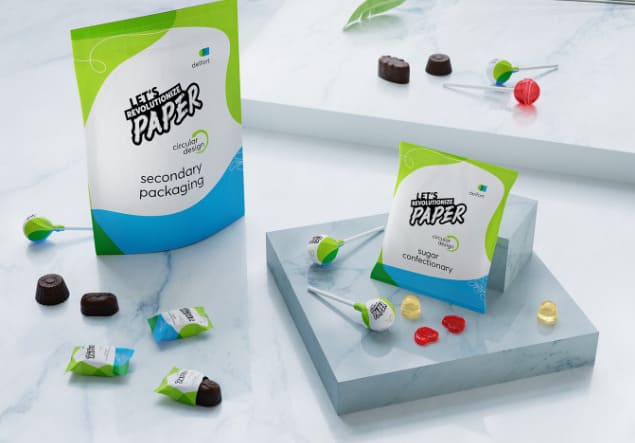When it comes to sustainable food packaging, tailor-made solutions are required: “Barrier paper is never standard, it must always be tailored to the product it is intended to package,” says Peter Hackl, Head of Packaging at delfort. At Fachpack 2025, delfort will be showcasing its range of barrier papers for a wide variety of applications for the first time – from ice cream bars and chocolate bars to muesli. Fold-wrap applications such as butter, stock cubes, and confectionery will also be featured.
Every food has its own requirements for barrier functionality. For example, ice cream and other frozen products must be protected from moisture and freezer burn, among other things. Cheese and chocolate require fat barriers that are reliable even at high temperatures. Dry products such as muesli, rice, or powder, on the other hand, require strong barriers against oxygen and moisture. “We specifically combine the right barrier with the requirements for storage, transport, packaging process, and recycling,” explains Hackl.
The packaging form is equally crucial: at Fachpack, delfort will be showcasing tri-fold, stand-up pouches, and flow-wrap packaging – including transparent paper variants. All papers can be printed using flexo and gravure printing and are heat- or cold-sealable. They are also compatible with common FFS packaging machines. “We ensure this through close cooperation with various packaging machine manufacturers,” says Hackl. Machine settings often determine whether the transition from conventional materials to new, sustainable barrier papers will go smoothly. “Here, we create process reliability for our customers through preliminary testing.”
In addition to the technical aspects, recyclability and regulatory compliance are also a focus. “Legal requirements such as the PPWR and the EU Packaging Regulation are a key guideline for us in our development,” says Hackl. In addition, delfort’s barrier papers are made from renewable fibers from pulp suppliers that are FSC and/or PEFC certified – and are recyclable according to the CEPI test method.





